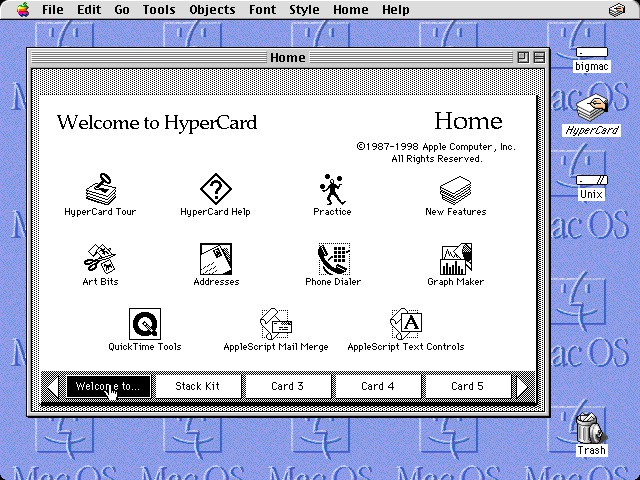HyperCard has been the topic of a thread here (https://retrocomputingforum.com/t/hypercard-because-its-thirty-years-old-now/) already, and – after the celebrations on the occasion of its thirtieth anniversary are over – this article on why HyperCard is no more at Loper OS (2011) may be a suitable prequel.
Why HyperCard Had to Die
http://www.loper-os.org/?p=568

The reason for this is that HyperCard is an echo of a different world. One where the distinction between the “use” and “programming” of a computer has been weakened and awaits near-total erasure. A world where the personal computer is a mind-amplifier, and not merely an expensive video telephone. A world in which Apple’s walled garden aesthetic has no place.
(The same is probably true for HyperCard’s never to be released successor, SK8, which was originally Lisp-based and eventually migrated to HyperTalk, which evolved into SK8Script. There’s an entire, lesser known history of Apple and Lisp behind this, e.g., MacFrames, another predecessor to SK8, used Coral Lisp, which eventually was acquired by Apple and became Macintosh Common Lisp.)
Besides personal recollections and some musings on the as inexplicable as inevitable death of the product, the article also contains a nice series of images showing the creation of a HyperCard stack step-by-step. And there’s a rich thread of comments, too.
Via HN, https://news.ycombinator.com/item?id=20549685
Note: One of the last posts in the comments streams is from a former HyperCard team member, who contradicts the alleged connection to a personal decision by Steve Jobs:
You have a historical error here. I was on the HC team when it was killed. It was killed when Claris was returned to Apple in 1992, long before Steve Jobs returned (1997). This is the reason I left the team. The official reason given to us by the execs was “there is no way to make money on a product we give away for free”. I believe that Jean Louis Gassee was the man mover behind this despite opposition from John Sculley who was on his way out anyways. It was part of J.L. general attempt to kill all multi-media work at Apple. I believe he was paving his way to BeOS and wanted to destroy the competition.
